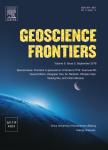Urban green resilience: Experience from post-industrial cities in Poland
作者机构:Nicolaus Copernicus UniversityDoctoral School of Social Sciences1 Bojarskiego Street87-100 TorunPoland Nicolaus Copernicus UniversityFaculty of Earth Sciences and Spatial ManagementDepartment of Urban and Regional Development Studies1 Lwowska Street87-100 TorunPoland University of Agriculture in KrakowFaculty of Environmental Engineering and Land SurveyingDepartment of Land Management and Landscape Architecture21 Mickiewicza Avenue31-120 KrakowPoland
出 版 物:《Geoscience Frontiers》 (地学前缘(英文版))
年 卷 期:2023年第14卷第4期
页 面:160-172页
核心收录:
学科分类:07[理学] 070602[理学-大气物理学与大气环境] 0706[理学-大气科学]
基 金:Authors at the Nicolaus Copernicus University in Toruń
主 题:Green spaces Spatial analysis Land cover transformation Development Anthropopressure Degradation
摘 要:De-industrialisation triggered economic,spatial and environmental changes in ***,this study identifies whether there has been a reorientation of spatial development in post-industrial cities towards the creation of green *** aim of the study is to analyse and evaluate the transformation of green spaces in 32 major cities in Poland,including 12 post-industrial *** sources were vector land cover data models from the Urban Atlas for 2006 and 2018,administrative boundaries from the National Boundary Register and building layers from the Topographic Objects *** research procedure was carried out using the GIS environment,through spatial analysis,geoprocessing algorithms,and spatial *** results have shown that post-industrial cities do not develop their urban resi-lience based on the expansion of green spaces and,consequently,do not build green urban *** addition,the research has proven that the greatest loss of green spaces is noticeable in parts of post-industrial cities with medium and high development intensity,where there is an intensification of con-struction *** dominant direction of the transformation of green spaces has been the conversion of agricultural areas into green spaces(87.79%).In contrast,the main direction of loss in green space has been the creation of new industrial units(24.80%)and the expansion of the urban fabric(23.53%).The article is original due to the fact that there is a gap in the literature regarding the study of green spaces in post-industrial cities with regard to the concept of green urban resilience.



